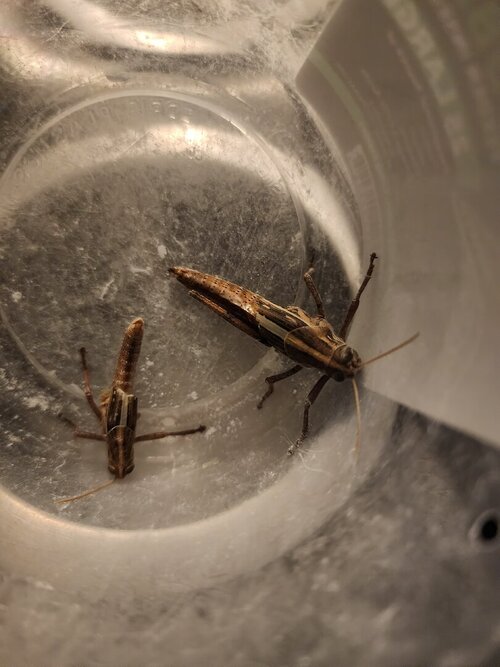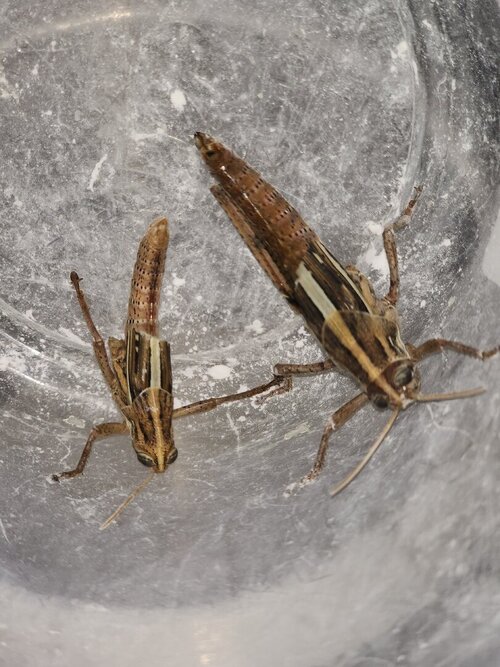moviemanmania
Avid Member
I’ve been field collecting American bird grasshoppers in an attempt to breed them. They are setup in large Rubbermaid with a side mounted heat Matt, 81f, timer light, climbing branches and fed green peppers, dandelion leaves, sweet potatoes, oranges and carrots. The females don’t last long and seem to perish in a few days and the males seem to be fading shortly behind them. I’ve even separated males from females but to no avail. What am I doing wrong?












